2020 Fall
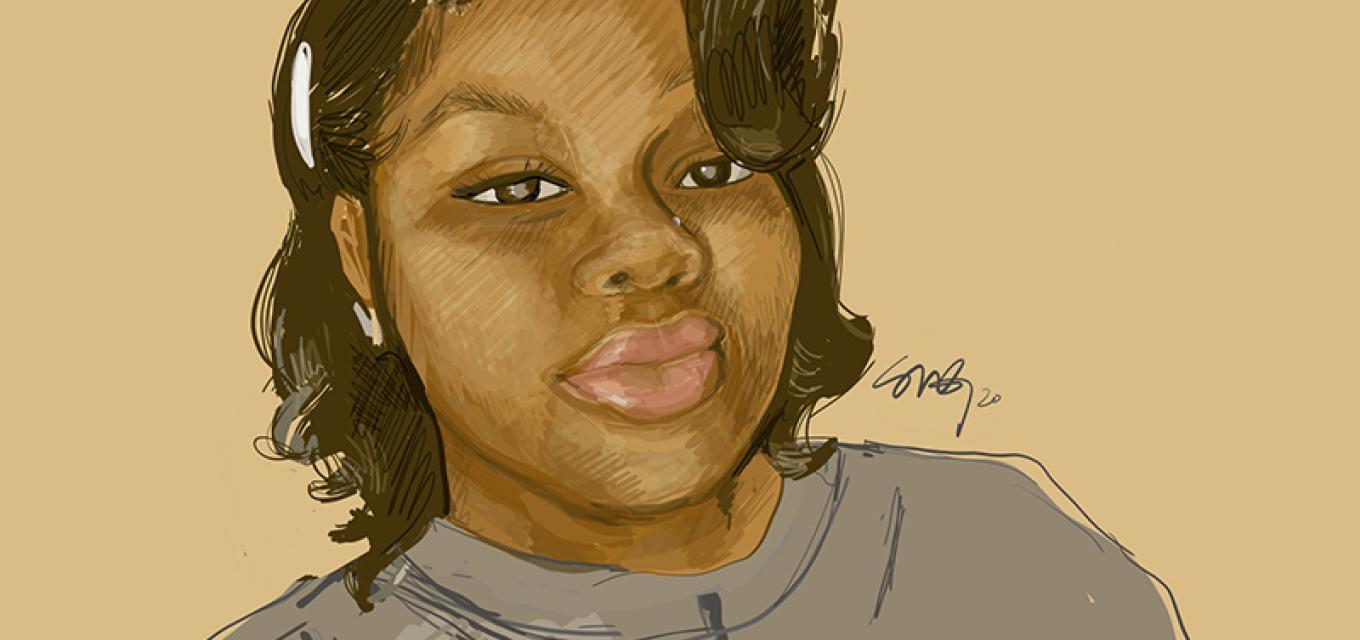
Commitment and action
CEHD Connect special issue: Racism, Resilience, and Resolve
This collection of stories and commentaries contains reflections and reactions offered in the wake of the killing of St. Louis Park resident George Floyd on May 25, 2020. Generated by CEHD alumni, students, faculty, and staff, the contributions explore themes of lived experiences, resilience, caring for our community, and commitment and action pulled from a special issue of Connect magazine dedicated to all the victims and survivors of systemic racism and police brutality—those whose names are known and those whose names are unknown.
Expectations
Art, expression, and education
Stephanie Morrison Gandy, ’19 MA
As a Black woman and CEHD alumna, seeing the brightness of Breonna Taylor’s future stolen away from our community impacts me greatly. There is so much promise in this so-called American dream to work hard, go to school, and accomplish great things. Breonna lived that life. She was accomplished and looked forward to 2020 being her year, as many of us did.
Her life matters. Black women need to be recognized for our past and present contributions to a liberated and uplifted future. Black women are on the front lines every day fighting continued police aggression and dehumanization by many Americans—and oftentimes, our peers, colleagues, acquaintances, and families. Carrying tremendous heartache, loss, pain, and resilience, Black women continue, knowing that this is our means of survival. We have no choice. We are committed to seeking justice for Breonna, for all Black women, for ourselves.
Artwork is my favorite mode of expression in response to a need for justice. I majored in fine arts during my undergraduate years at the University of Minnesota College of Liberal Arts. My work then focused on the injustices of Eric Garner, Mike Brown, and Trayvon Martin. My artwork now continues in response to the legacy of police brutality that we’re seeing today, as there has been little to no change.
Driven to do more for my community, I applied for and completed a program in CEHD for multicultural education. My hope is to apply this education for the improvement of the lives and success of BIPOC students and the greater community. I believe that art, expression, and education have significant roles to play as we continue on the road to justice. I created this drawing with this goal in mind. I challenge and charge the CEHD community to consider their commitment to ensuring that Black lives matter. This is more than a brief moment of attention. This is a lifelong learning and application process, something that CEHD students, graduates, faculty, and staff should be adept at and eager to take on. I have the sincerest hope that we can create significant change if enough hands commit to the work.
 |
 |
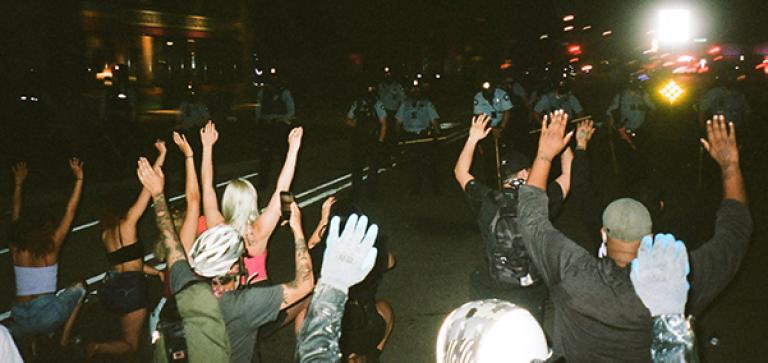 |
A message to ‘White’ folks in solidarity with Black lives
Nate Whittaker, School of Social Work
I knew George. He worked at Latin Bistro, where I frequent as a house music DJ. He was gentle, kind, and funny. I watched the full video of his murder and became genuinely sick (nausea and de-realization episodes—a physiological response to emotional trauma). The day following his murder, I woke to an overwhelming number of messages from my students; mostly young people asking for my thoughts on “what to do.” I understand being an instructor in the social justice field will have that outcome. I can say with full sincerity, I did not know. I believe they ALL have the tools to induce social change. This “old guy” wanted to reach out to them and ask, “what should I do?”
I have written countless times after the murder of our Black brothers and sisters (by the police) in the past decade; it could be daily. Each exercise of this sort brings me closer to a deeper revolutionary calling: that non-violence often protects the state; that our choice of a future we want will not come without resurrection; that in this future, we must not become our own monsters and grasp that a rebirth of human decency will not be utopian. The goal may be, as Corey Robin once said, “to convert hysterical misery into ordinary unhappiness.” I want to complain about the humidity, rather than watch more murders of Black people at the hands of police.
What holds our tongue? What makes us turn our back on this future? We are certainly living in “hysterical misery.” How long do we bear witness to the struggles of others before we act? Our daily lives and history have given us plenty of examples—plenty of moments to witness. Our denial of the narratives of those who are oppressed is the same as denying the car accident that happened in front of our eyes. We speed by, while the vehicle is on fire, saying, “not really my problem” or “it didn’t happen.”
I do not believe that the majority of “White” people in America are consciously committed to White supremacy. I believe most “White” Americans are appalled at the police murders of Black people. However, most White people go along with what disturbs them; they are otherwise terrified of the pain and consequences of challenging injustice. Many White people consider the murder of George Floyd abhorrent. Sadly, once “order” is restored, so will their lives.
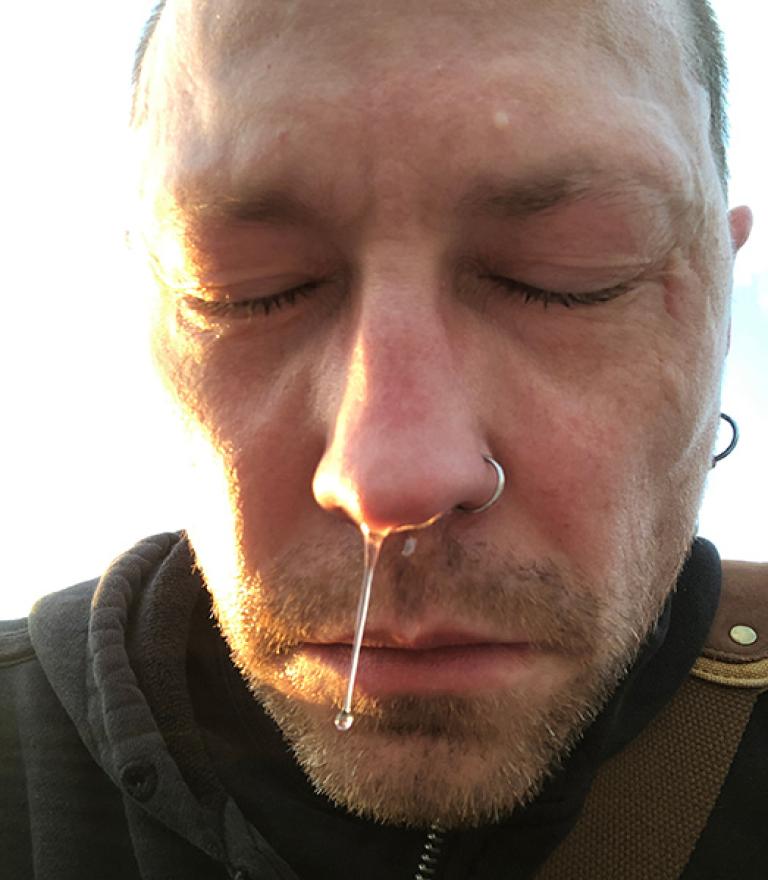
I am reminded that “Whiteness” is a “private club” (Noel Ingatiev). Black people will be treated with hatred by police ad infinitum. “White” people, as long as they act with courtesy to the police, that “courtesy” will predictably be reciprocated. However, if you are “White” and do not conform to the club and have an “abolish the police” bumper sticker, you’ve broken the rules of the club and will likely face an uncourteous response. How many “White” folks are willing to agitate and disrupt the rules of the club until the “rules” become meaningless? Will we perturb?
Will we tamper with the rules? Will we intrude, resist, and unsettle the club? Will we help to ABOLISH the club, and in doing so, abolish Whiteness? “Whiteness” is a social fabrication and only matters as long as one plays by the club’s rules; and, “Whiteness” requires “transmission” to others in our lives for its preservation. Will you, AT MINIMUM, stop this transmission?
I am trying to think of a response to those students and loved ones who have already reached out. I am struggling to find a “common action” that will satisfy their need to act in harmony with actual social change. There is a vast gap in everyone’s exit from the “club”; this makes it difficult to create any road map. I can say this: we are ALL in possession of the tools needed to act at this time. Follow the path laid before you by others in the struggle (particularly Black folks at this time); follow them; affirm your resignation from the “club” whether that be talking to other White people (very important) or joining in a more “perilous” struggle. As I have taken my fair share of tear gas and rubber bullets, I choose to continue supporting my students, educating myself, speaking with other “White” folks, and organizing for the common good.
Looking at myself
Kelli Kern, Child Development Center
When helping my daughter deal with all of her feelings around this traumatic tragedy, I came to realize that I needed to look at myself (in terms of racism) and how I interact and assist my preschoolers in dealing with racism in the classroom and in this country. I was taught to “celebrate diversity” but the word “racism” or “race” was never mentioned. I realized that I was lacking the knowledge to help guide my preschoolers in the area of racial development. I started looking for resources (websites, books, and videos) for myself to share with coworkers, parents, and preschoolers. I will continue to educate myself and hopefully grow in becoming an anti-racist person.
In looking at resources, I realized that my preschoolers need to be exposed to more books of children of different races and religions, books that talked about race and explained racism in developmental appropriate methods. So this tragedy has forced me to look at myself and how I have benefited from systemic racism, how I didn’t realize how racism was affecting my child on a daily basis, and how I need to grow as a preschool teacher so that I can help my preschoolers grow in their racial development.
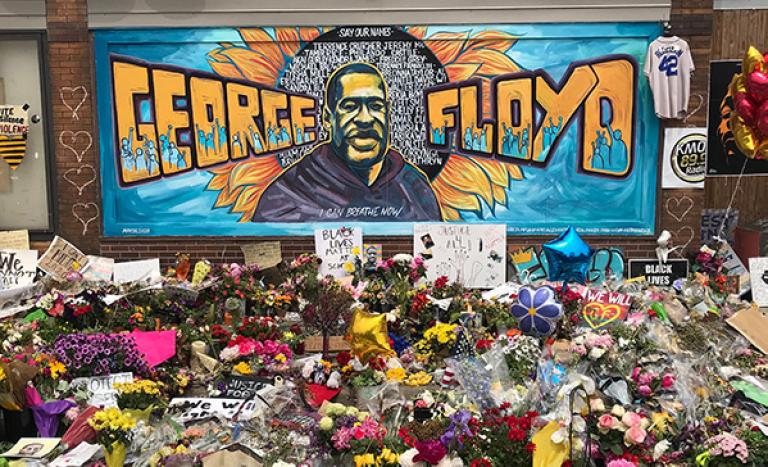 |
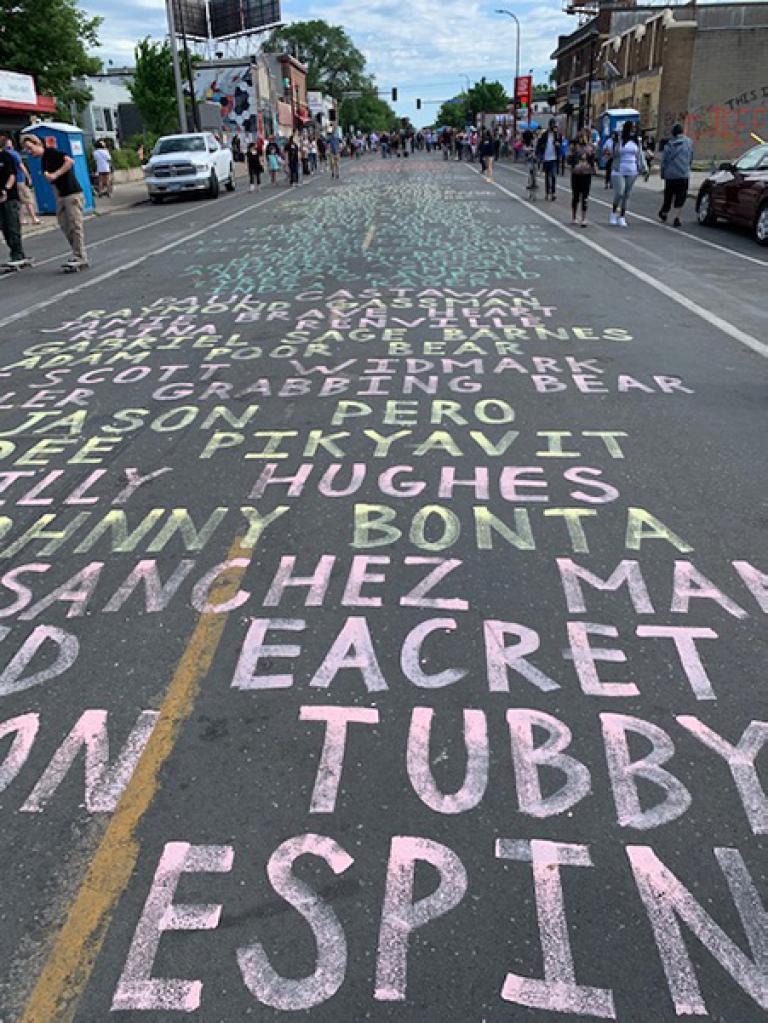 |
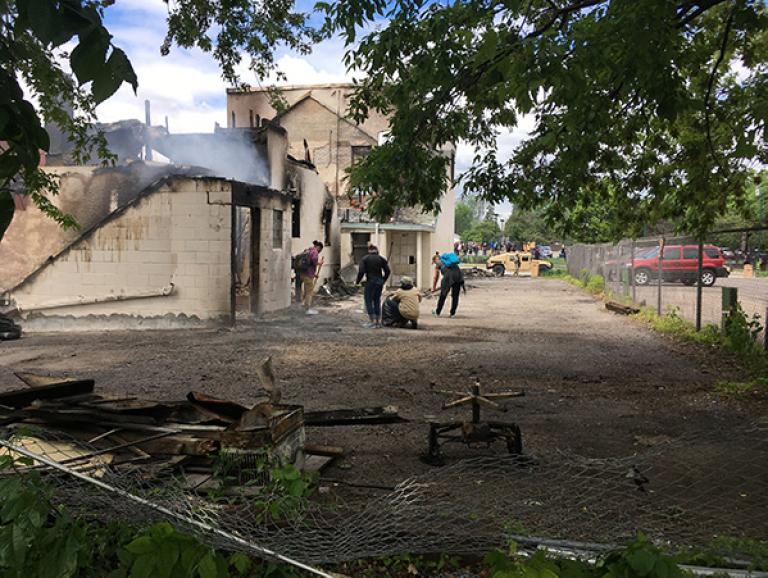 |
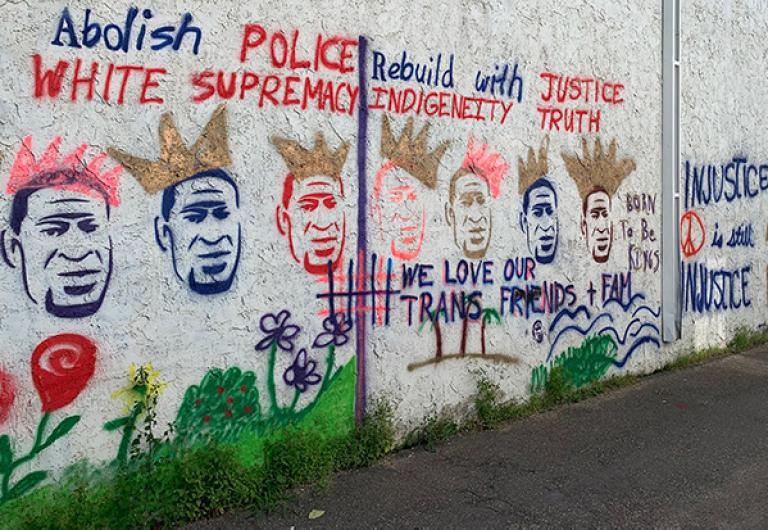 |
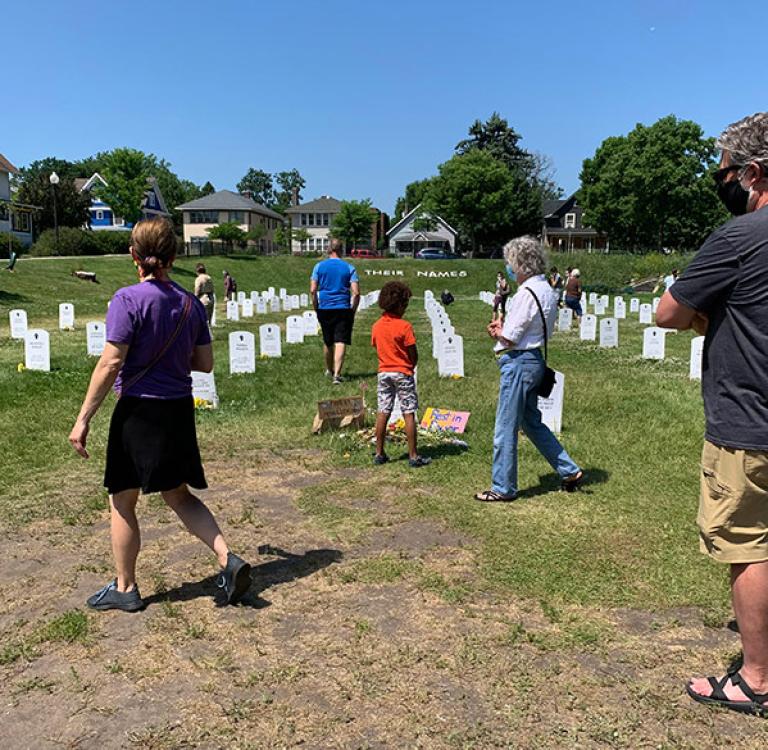 |
Put higher education on notice
Abdul Omari, ’15 PhD and former Regent
From a healing standpoint or going forward, it’s very important we recognize that healing is a process. It’s not “We have healed and we’re done.”
Moving forward now, we as an institution of higher education cannot maintain neutrality. We can’t maintain status quo. We must remain active in recognizing the ways our higher education system has been designed for some and not others. Moving forward is chipping away at that system that is harming some but helping others. It’s not only the MPD or housing or economic indicators. We are also implicated.
A rededication to continual listening and learning
Deborah Dillon, senior associate dean
Throughout my life as a teacher and researcher, my focus has been on improving the literacy educational disparities of PK-12 students who have not been well served by our society or their schooling experiences. My work in rural and urban settings over the past 30 years, including partnering with teachers, parents, and policy makers—while always keeping students at the fore—has not been nearly enough. I have embraced social justice, diversity, and equity efforts to better prepare graduate and professional students in CEHD in meaningful ways, but my knowledge and efforts on how to do this are not nearly enough.
The deaths of George Floyd and other people of color have caused me to reflect more deeply and altered my thinking profoundly. It is uncomfortable, and I find it hard to admit that my work could well have reified some institutionalized racist practices and prevented opportunities for students. Because of my limited understanding of how easily we fall into complicity without critique, I rededicate myself to listening, learning, self-study, and continual examination. My latest readings include White Fragility by Robin DiAngelo (recommended by a colleague in the dean’s office), and Begin Again: James Baldwin’s America and Its Urgent Lessons for Our Own, by Eddie Glaude, Jr., a scholar and human being I admire. Author Jon Meacham—citing President Lincoln—recently asked how we might learn to live differently if we could think anew and act anew. This is my goal: To work alongside others and to act in responsible, dramatically new ways.
Early childhood educators need to take the initiative
Thuba Nguyen, Child Development Center
As early childhood educators, it is our obligation to our youngest learning citizens to speak on our solidarity to teach children about anti-bias, discrimination, racism, inclusion, tolerance, the oppression of minority and Black communities, and multiculturalism. Every life has value. Children deserve an educational space that not only represents the world around them but a world THEY have a voice and power in. Early childhood educators must take the initiative in designing and fostering a culturally inclusive classroom that increases an intellectual and emotional response from the children and their families.
As a minority and person of Color, I’m asking all early childhood education centers in Minnesota to take a stand against systemic racism and make a commitment to making changes to its operation and narrative surrounding race, anti-bias education, and social injustice. It is my complete and utter disposition to compassionately and intrinsically evolve the framework of a culturally diverse early childhood education environment that generates a strong community of early childhood educators in promoting anti-bias education and using willful language that empowers all children and members of Color, minority, or Indigenous communities.
We are one community
Dean Joslin, ’78 General Education
My affection for the University of Minnesota has lasted for three decades, along with having two of our children continuing their education career at the U. I am a high school teacher in the Minneapolis area and an alumni of the CEHD community.
We all respect and support the opportunity/empowerment to be a voice of change in our society; the University of Minnesota is a world leader in those values.
We decided as a family to go to the site of where George Floyd lost his life. Living in the suburbs of Minneapolis for 30 years, our family has been pretty sheltered from any large-scale historical moment; we needed to take our kids (age 20 and 21) to see and feel the pain and suffering the people of South Minneapolis are going through.
I have seen issues and concerns that have affected the lives of others in the USA (civil rights, protest, violence) but nothing like this has happened in our community for quite a long time; our children have not experienced anything like this before. Our kids felt the pain, felt the anger, and needed to be there. My goal as a parent was to remind our kids that we are one community. This community needs to do a better job at communicating and getting along.
I expect when the U of M students get back to school this fall, there will be a lot of conversations about the past weeks in our city. We as adults will need to be listening, but at the same time we can be giving out solid advice that will allow everyone to keep trying to make it a better world.
A foundation for support
Regina McNeil, ’84 PhD
I remember my years at the University with fondness and I am extremely proud of my degree. Through my foundation [a private 501(c)3], I am eager to lend much more financial support to the University than I have in the past. The critical caveat is that I must be able to designate the support for Black students exclusively. Currently, our foundation is unable to do so. One way the University can demonstrate its “deep commitment to equity” is to correct this error.
Don’t just talk about it, be about it.
Let’s get to work
Andrew Gobran, ’17 MA
Having the courage to delve into ourselves is the first step in understanding our biases and privilege. In doing so, we give ourselves, and others, the opportunity to learn and challenge our assumptions as we work together to inspire and drive change. In the words of St. Francis of Assisi:
“Where there is hatred, let me sow love; where there is injury, pardon; where there is doubt, faith; where there is despair, hope; where there is darkness, light; where there is sadness, joy.”
I will start with myself. Let’s get to work. #Blacklivesmatter
Value our educators
Anonymous
I believe that at the heart of systemic injustice for People of Color is the inequality in the education system. Not all school districts are the same, not all schools within a district are the same. It is well known that lower-income neighborhoods simply do not have the resources to provide the same quality of education as higher-income neighborhoods. If we can’t provide equality of opportunity for the children in our society, we cannot expect equality of outcome. We need to change how funding and leadership works in our school districts. We need to value our educators more.
Use the lens of equity
Theresa Battle, ’94 Ed Admin Masters, ’15 PhD
The killing of George Floyd is horrific and tragic. Sadly, it took Mr. Floyd’s killing for the masses to see first-hand what many generations of Black people have complained about, fought against, and cried over. I and many Blacks continue to find joy and press on in our daily lives even through the persistent racism, discrimination, and injustice we have faced. Black lives matter. This means Blacks are human, beautiful, deserving of love, dignity, and respect. It does not mean another life is worth less or more. Just that Black lives should be valued just as much as any life. As an educational leader, I will continue and I ask my staff to reflect on our equity “to do” list for reopening of school and reprioritizing our work. It has to be different from what we were doing before COVID and the murder of George Floyd. In our work together and in our lives every day, we must use the lens of equity and be guided by our values of high expectations, respect, integrity, and partnership.
CEHD needs to hold a mirror to itself
Lisa S. Kaler, PhD student, OLPD
Before CEHD can claim moral superiority by appropriating the good work that POC students, faculty, and staff do to support one another and their communities, CEHD must take a hard look at what happens within the walls of its own buildings. While CEHD remains one of the most diverse colleges on campus, Students of Color continue to experience a climate that is neither equitable nor inclusive….
As a White student, I have a responsibility to push the college and my department to better support Students of Color. Without a critical examination of CEHD in upcoming issues of Connect, the words will be hollow.
Recommendations
Schools without police
Brian Lozenski, ’14 PhD, core organizer with the Education For Liberation Network, MN Chapter
The Education for Liberation Network, Minnesota Chapter, stands in solidarity with the youth, families, teachers, and community members who organized to push the Minneapolis Public Schools (MPS) School Board to vote to end the district’s relationship with the Minneapolis Police Department. We specifically want to lift up the Black youth who led this effort despite being constantly targeted by police in schools. The vote was a testament to the will of Black, Indigenous, and People of Color (BIPOC) youth in organizations like Black Liberation Project, Youth Political Action Coalition (YPAC), Young Muslim Collective, and YoUthROC, among others, who strive, each day, to implore the district to live up to its rhetoric of equity and to truly serve the children of Minneapolis by providing an education they deserve. Ed Lib Minnesota recognizes that the termination of the racist MPD is just one stretch of a long road to justice that will take courage, imagination, humility, and will among the district’s leadership and its communities.
Simply removing police from MPS alone will not ensure the safety and well-being of Minneapolis’s BIPOC youth and families. The path forward must take into account the educational paradigm that allowed for police to have a role in schools in the first place. MPS must question the nature of educational structures that seek to justify notions of meritocracy, standardization, ability, and competition. Ending the contract with MPD should not be seen as a way to save money. The money needs to be reinvested in programs that nurture BIPOC youth. MPS must take bold steps to center trauma-informed practices and ethnic studies and address racial disproportionality between teacher and student demographics in order to create an ethic of care across the district. The district must take a reperational stance to address the decades of racial animus faced by generations of Youth of Color, including making substantial financial investments in historically underfunded neighborhoods and funneling the most effective educators to the students with the most need. In addition to the elimination of police in schools, the district must terminate teachers who consistently remove Youth of Color from classes and administrators who ignore the data showing the evidence of racist practices occurring each day.
The district must fundamentally change its curriculum across all grade levels to center the histories, cultural practices, knowledge, and skills of its diverse constituency. No longer is it acceptable for students to graduate without a deep and profound understanding of Indigenous, Pan-African, Pan-Asian, and Pan-American studies. No longer can multilingual youth be treated as though they are deficient against a monolingual English standard. No longer can racialized disparities in discipline continue to push students out of schools. Youth who consciously or unconsciously resist racist educational contexts are not behavioral problems. They are the barometers who measure the toxic atmosphere of a district with a deep history of anti-Black and White supremacist logics.
Ed Lib Minnesota stands with the people of Minneapolis and other communities to demand that the cops who are being kicked out of the schools be replaced with BIPOC counselors and educators, rich and vibrant ethnic studies curricula, transformative justice practices, and translingual classrooms. Our organization would like to be a resource to help MPS transition toward this vision. Every child deserves to be the subject of their own educational journey, and not the object of an imaginary White norm. Police in schools are just one piece of a much larger White supremacist puzzle that must be taken apart and exposed for the lie it is.
minnesota@edliberation.org
Ed Lib Minnesota is a network to bring together various constituencies in Minnesota toward organizing for educational justice. Its membership consists of about 100 teachers, youth, activists, and academics.
From heartbreak to hope
Sallye McKee, ’85 PhD
Thinking about the pain of George’s savage, brutal murder broke my heart. In seeking solutions, I thought about the important and necessary work of innovative, evidenced-based programs emanating from the minds and hearts of CEHD faculty and how these programs are essential to the development of leaders who want to realize the land-grant mission of our great university. Why? Because powerful thoughts interrogated and shared across the myriad intersectionalities inherent in the minds of a diverse faculty, staff, and students inform the development of new narratives. These new narratives are tools that we must use to hone better policies; to create more positive, intentional interactions; and to shape publicly stated priorities that help us to build a just and equitable society. These tools help us to maintain hope as we labor to recognize, confront, and dismantle racism, sexism, homophobia, ageism, and ableism. CEHD must be the haven of safe spaces where we learn how to be effective allies in building our preferred democratic future. And most importantly, the CEHD community must take great pride in being an incubator that nurtures our daily thoughts, while reminding faculty, staff, and students of the inherent joy of believing “Black Lives Matter.” Only then will George Floyd’s life and death reaffirm our commitment to maintain and nurture MLK’s concept of building the beloved community as our most treasured value and guiding light in the quest of our Northern Star.
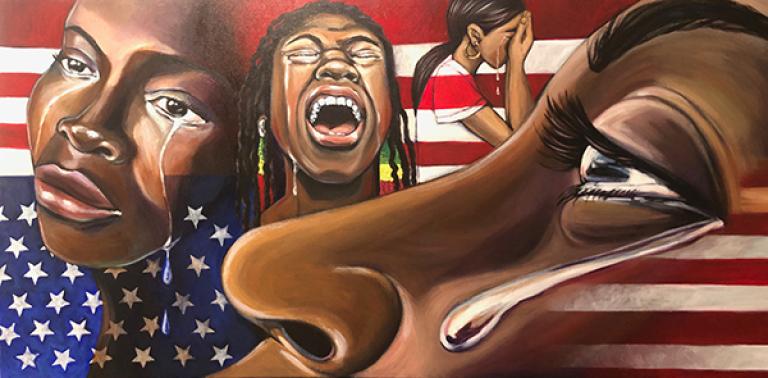
Mama by Melodee Strong, ’20 MEd
“As George Floyd was losing his life, he called out for his mama. Something I feel most of us do when we are in trouble. If not God, it’s our mothers. Black and Brown mothers endure the most suffering when their children are lost to police violence and murder. I wanted to reflect that in this painting—the grieving of mothers in this country when their child is killed. No one seems to hear their suffering. It’s also a cry out to the community to make change because this country is in a state of unrest and has been for a long time. Hence, the upside down flag. The flag is raised upside down when the country is in a state of unrest or peril.”
Community poem
Compiled by Tania D. Mitchell
That cry, I CAN’T BREATHE has become a battle cry | Rita McGlasson
We were unarmed, broken hearted, and in need of justice. | Max Webb
Even in the midst of a global health crisis, discrimination, racism, and hatred are crises of their own that continue to infect the U.S. and the world. | Andrew Gobran
But racism seems invisible to the members of the dominant culture. They are certain that their actions are not racist, that when they act, their actions are justified. | Anonymous
We are at a moment to listen, learn, and work to live up to what our country should be for everyone. | Pam Meuwissen Werb
Hope rests on our capacity to change, even with an incomplete vision of what will be asked of us. | Karen Storm/Karen Seashore
Can we capture this moment and create the multiracial and multiethnic social democracy we all want, where everyone can live, play, and breathe easily? | Bodunrin O. Banwo
We must realize and reflect upon the fact that racism is not an isolated problem to be solved in a laboratory, but it is our lived experiences that we are charged with understanding. | Patricia Rufino
This is not a riot, it is a revolution. Black lives matter. | Max Webb
Let love be the highest expression of your love and concern for all Black lives. And let it be so today, right now. | Ebony Adedayo
Let love be action oriented. | Ebony Adedayo
May we awaken to a better way. | Rachel Wetzsteon
Guest Editors:
Saida Abdi | Assistant Professor, School of Social Work
Nina Asher | Professor, Department of Curriculum and Instruction
Stefanie L. Marshall | Assistant Professor, Department of Curriculum and Instruction
Tania D. Mitchell | Associate Professor, Department of Organizational Leadership, Policy, and Development
Top Splash Image: Stephanie Morrison Gandy, Photo 1: Max Webb, Photo 2: Nate Whittaker, Photo 3: Max Webb, Photo 4: Nate Whittaker, Photo 5: Jessica Toft, Photo 6: Frances Vavrus, Photo 7: Sashank Varma, Photo 8: Frances Vavrus, Photo 9: Kirsten Mortensen, Photo 10: Melodee Strong